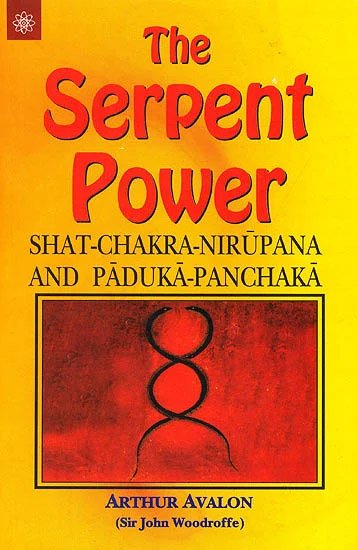Shat-cakra-nirupana (the six bodily centres)
by Arthur Avalon | 1919 | 46,735 words | ISBN-10: 8178223783 | ISBN-13: 9788178223780
This is the English translation of the Shat-cakra-nirupana, or “description of the six centres”, representing an ancient book on yoga written in the 16th century by Purnananda from Bengal. This book investigates the six bodily centres famously known as Chakras. The text however actually forms the sixth chapter of the Shri-tattva-cintamani, compiled...
Verse 21
Sanskrit text, Unicode transliteration, Word-for-word and English translation of verse 21:
अत्रास्ते लाकिनी सा सकलशुभकरी वेदबाहूज्ज्वलाङ्गी
श्यामा पीताम्बराद्यैर्विविधविरचनालंकृता मत्तचित्ता |
ध्यात्वैतन्नाभिपद्मं प्रभवति नितरां संहृतौ पालने वा
वाणी तस्याननाब्जे निवसति सततं ज्ञानसंदोहलक्ष्मीः ॥ २१ ॥atrāste lākinī sā sakalaśubhakarī vedabāhūjjvalāṅgī
śyāmā pītāmbarādyairvividhaviracanālaṃkṛtā mattacittā |
dhyātvaitannābhipadmaṃ prabhavati nitarāṃ saṃhṛtau pālane vā
vāṇī tasyānanābje nivasati satataṃ jñānasaṃdohalakṣmīḥ || 21 ||Here abides Lākinī, the benefactress of all. She is fourarmed, of radiant body, is dark[1] (of complexion), clothed in yellow raiment and decked with various ornaments, and exalted with the drinking of ambrosia.[2] By meditating on this[3] Navel Lotus[4] the power to destroy and create (the world) is acquired. Vāṇī[5] with all the wealth of knowledge ever abides in the lotus of His face.
Commentary by Śrī-Kālīcaraṇa:
“Decked with various ornaments” (Vividha-viracanālamkṛtā).—She who is decorated with gems and pearls arranged in varied and beautiful designs.
Cf. Lākinī-dhyāna elsewhere: “Let the excellent worshipper meditate upon the Devī Lākinī, who is blue and has three faces, and three eyes (to each face), fierce of aspect, and with Her teeth protruding.[6] In Her right hand She holds the thunderbolt and the Śakti,[7] and in the left She makes the gestures[8] of dispelling fear and of granting boons. She is in the pericarp of the navel lotus, which has ten petals. She is fond of meat (Māṃsāśī),[9] and her breast is ruddy with the blood and fat which drop from Her mouth.”
The navel lotus is called Maṇi-pūra. The Gautamīya-Tantra says[10]: “This Lotus is called Maṇipūra because it is lustrous like a gem.”[11]
Footnotes and references:
[3]:
Etat: a variant reading is evam, “in this manner”.
[6]:
Viśvanātha quotes a Dhyāna in which She is described as humpbacked (Kubjinī) and as carrying a staff.
[8]:
Mudrā.
[9]:
Some read “Māṃsastāṃ”=She who abides in flesḥ.
[10]:
A Vaiṣṇava-Tantra of great authority. The quotation is from Ch. 34 of the same.
[11]:
Maṇi-vad bhinnaṃ. Bhinna here means “distinguished,” for in the Maṇipūra is the Region of Fire. See also Rudra-yāmala, Ch. XXVII, v. 60.
